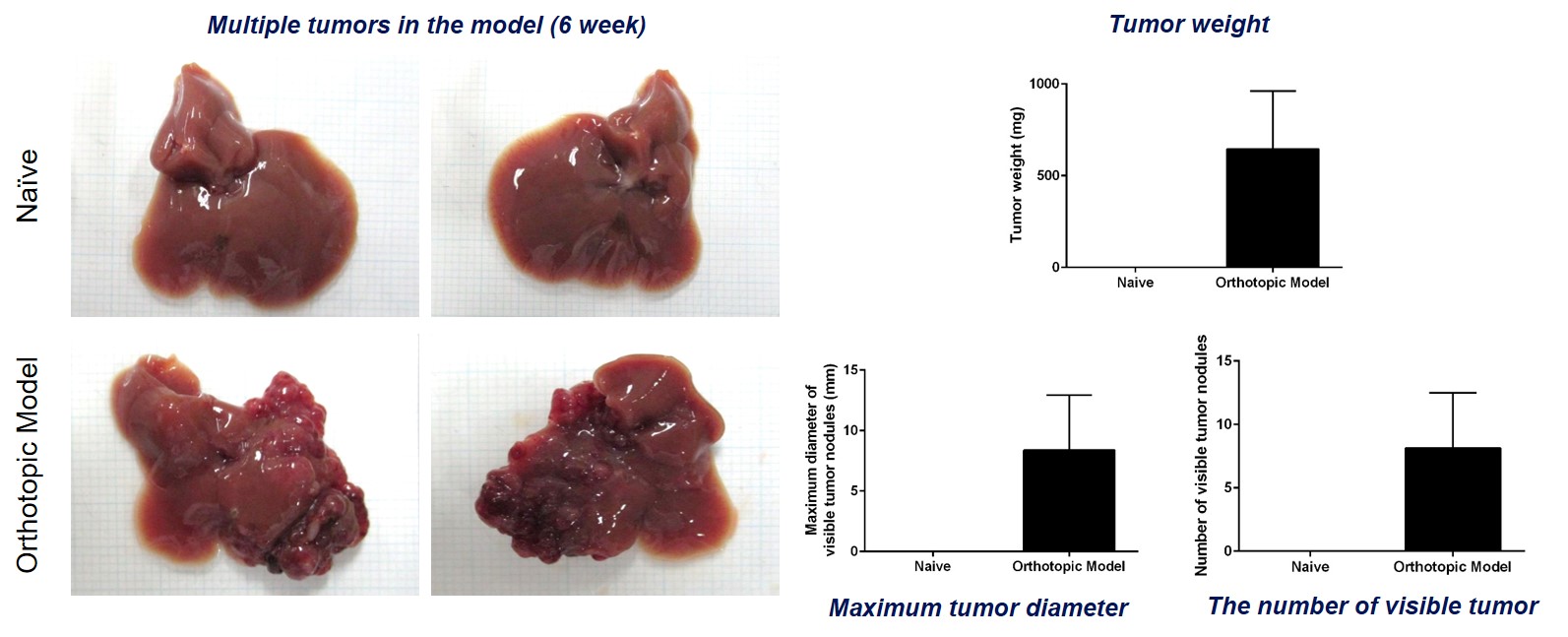In-vivo screening and pharmacology study for liver cancer
We would like to introduce an in-vivo screening study using our liver orthotopic xenograft and STAM™ models. In case you are unfamiliar with these models, we would like to quickly present them, which could be extremely useful to you.
■ STAM™
The STAM™ was developed by SMC Laboratories as the world’s first mouse model for spontaneous liver cancer from chronic liver disease, “NASH”. Using this model, it is possible to conduct pharmacology studies that consider the carcinogenesis process (liver damage – fibrosis – carcinogenesis) as seen in humans. Furthermore, it is widely considered to be the model that most accurately replicates liver cancer as it is seen in humans (Dow et al., Proc. Natl. Acad. Sci. USA,. 2018).
■ Liver Orthotopic Xenograft Model
The advantage of this model is its short induction period (6 weeks) which allows a low study cost. However, the model does not reproduce the underlying diseases, so it is not possible to assess the efficacy considering the biological changes in the liver attributed to carcinogenesis (Liu et al., Hepatoma Res., 2020). Therefore, it is a suitable model for in vivo screening of novel anticancer drugs.

If you have several drug candidates for liver cancer, why don’t you conduct in vivo screening studies in the liver orthotopic xenograft model to assess their efficacy while keeping costs low, and then comprehensively assess the efficacy of those with observed anti-tumor potency using STAM™?
